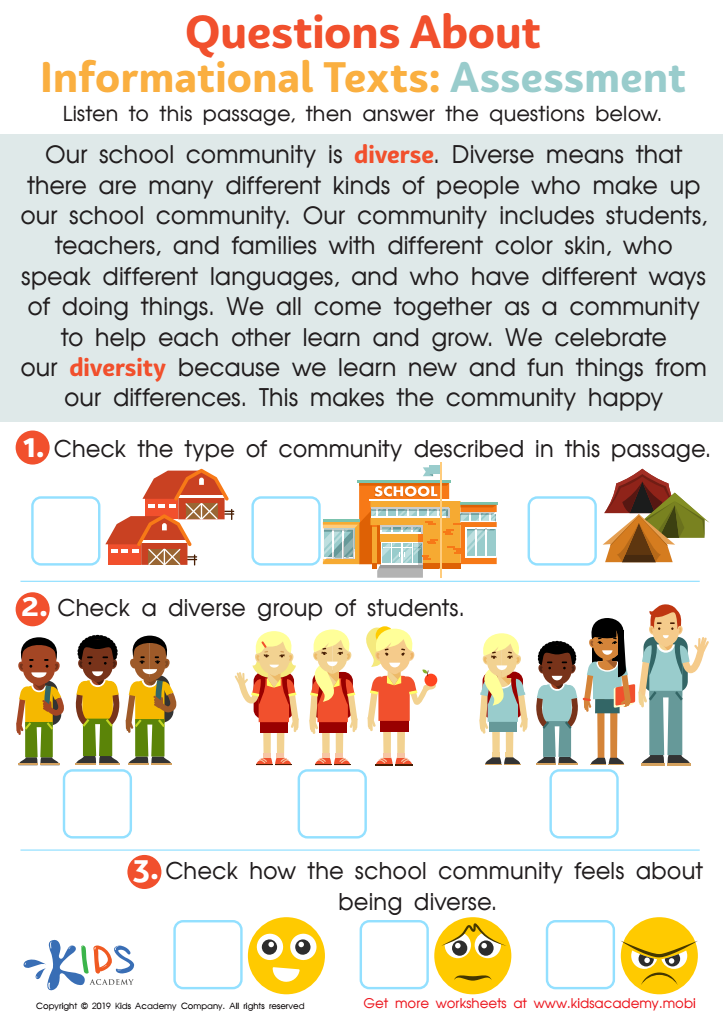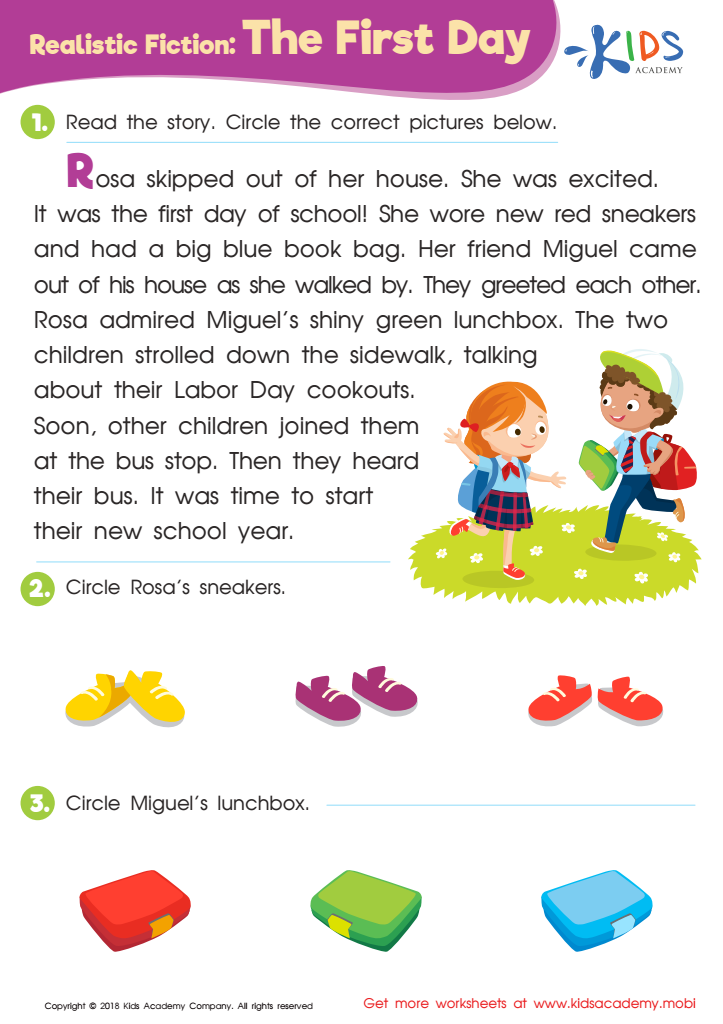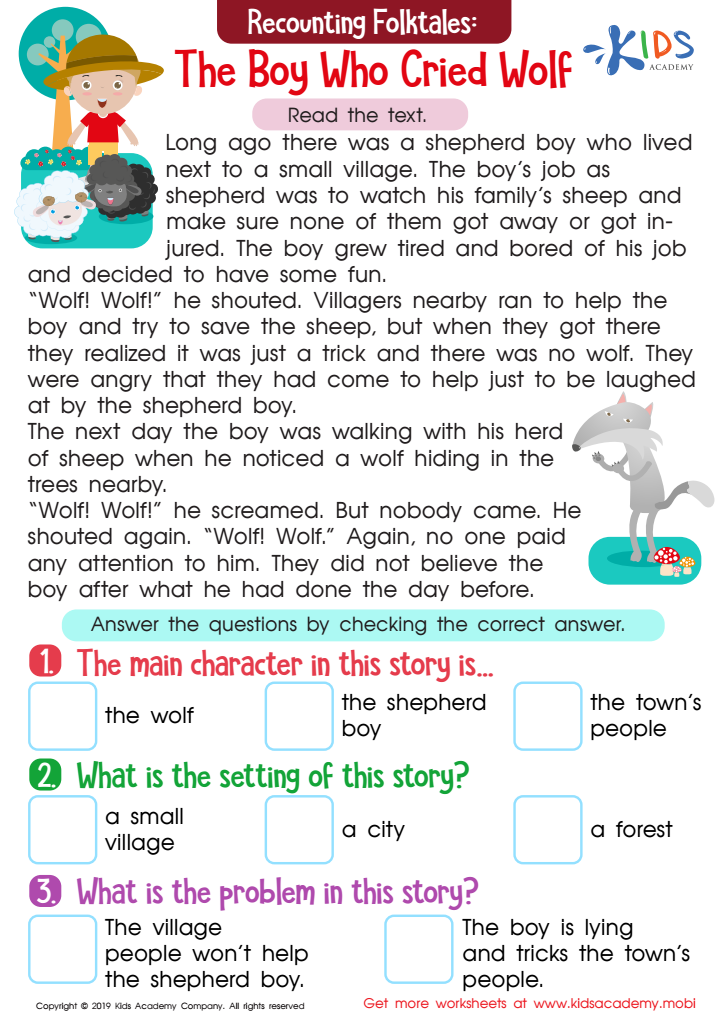Text analysis Normal Worksheets for Ages 6-9
3 filtered results
-
From - To
Welcome to our Text Analysis Normal Worksheets for ages 6-9, designed to enhance young learners' reading and comprehension skills. These engaging, interactive worksheets focus on essential text analysis concepts, helping kids understand story elements, identify main ideas, and make inferences. Perfect for classroom use or home learning, our resources promote critical thinking and reading fluency while making learning fun. Each worksheet is thoughtfully created to align with the developmental needs of children in this age group. Explore our collection today and empower your child to become a confident reader and analytical thinker, laying a strong foundation for their academic success!


Questions About Informational Texts: Assessment 1 Worksheet


Realistic Fiction: The First Day Worksheet


The Boy Who Cried Wolf Part 1 Worksheet
Text analysis in children aged 6-9 is essential for several reasons. At this stage, children are developing critical reading and comprehension skills that form the foundation for their future academic success. Engaging in text analysis helps them understand the structure, themes, and deeper meanings in stories, promoting analytical thinking and fostering curiosity about the world.
Moreover, it cultivates vocabulary and language skills as children extract key words and phrases from texts. By analyzing what they read, students learn to identify the main idea, make connections, and draw conclusions, skills that are vital for literacy development. This process encourages active reading rather than passive consumption, leading to improved retention and understanding.
For parents and teachers, prioritizing text analysis promotes a love of reading that extends beyond the classroom. It inspires discussions about texts, enhances critical thinking, and enables children to express their thoughts articulately. Such practices not only support academic growth but also prepare children for future challenges by developing their ability to think critically and interpret information. Investing time in teaching and nurturing these skills ensures that children establish strong literacy foundations, which will benefit them throughout their educational journey and beyond.
 Assign to My Students
Assign to My Students




















